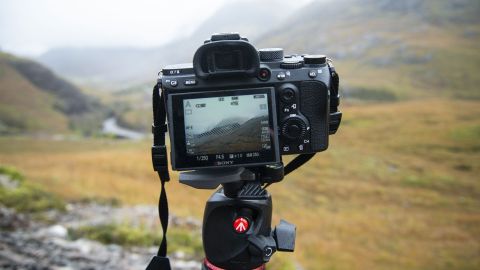Space Verdict
While the Sony A7 III gives advanced enthusiasts and even professionals a lot of camera for their money, it does have a few annoying handling niggles.
Pros
- +
10fps burst shooting
- +
Brilliant autofocus performance
- +
Weather-sealing for tough conditions
Cons
- -
Missing dials for drive and focus modes
- -
Unbalanced with heavier lenses
- -
Unfriendly menu system
Why you can trust Space.com
The Sony A7 III was introduced into the company’s mirrorless range in 2018 as a successor to the A7 II. Although pegged on paper as an entry-level full-frame when compared to the rest of the alpha line-up, none of its features could be considered basic.
Although the A7 III is a generalist camera, being such a versatile jack of all trades is part of its popularity and appeal. With 5-axis image stabilization, blistering 10fps maximum shooting, and 4K video, its specs make it a terrific all-rounder whether you’re shooting stills or video footage.
Type: Mirrorless
Sensor: 24.2MP full-frame
Lens mount: E-mount
ISO range: 50 to 204800 (extended)
Viewfinder: 2.36m dots
Video capability: 4K UHD at 30/24fps, Full HD at up to 120fps
Weight: 1.43 lbs
Size: 5 x 3.8 x 2.9 in
Memory card type: 2x MS/SD (1x UHS-II compliant)
No camera is perfect though, and the Sony A7 III isn’t without its foibles. Some users have been critical of the button and dial layout – or lack of dials in some cases. Sony has cleared up the menu system on its latest cameras, but the A7 III still feels harder to navigate than it needs to in some areas.
Negatives aside, the A7 III is a remarkable camera that also manages to feel remarkably small. During our testing, we used it on a week-long landscape photo tour, around the streets of London, and on a commercial portrait gig, to put it through its paces in a range of scenarios. The A7 III continues to win users over because of its versatility, providing a quality result for an affordable price point.
The handling and control layout aren’t ideal, and other cameras might grab the headlines in specific areas, but few full-frame models are so consistently capable of capturing such a wide range of subjects. So versatile is the Sony A7 II, we included it in our guide to the best cameras for astrophotography.
If this product isn't for you, and you want to explore other options, we've reviewed plenty of other cameras in our best cameras guide.
Sony A7 III review: Design
- Comfortable grip
- Touchscreen focus
- Tilting rather than vari-angle screen

One of the first things you notice about the Sony A7 III (especially if you’re coming from a full-frame DSLR) is its small size. This is good news for those who like to travel light, and fine when it’s paired with the 28-70mm kit lens or a basic prime such as the FE 50mm F1.8. Unfortunately, it results in a more front-heavy setup when adding premium Sony lenses such as the FE 24-105mm f/4 G OSS. Sports and wildlife shooters working with longer lenses will either need to support the lens with their hand or invest in the optional VG-C3EM battery grip to balance things out. Otherwise, the Sony A7 III is generally comfortable to handhold, and the camera’s rubber grip makes for a good purchase around the camera body itself.
In terms of button layout, things are fairly straightforward. On the top plate, the exposure mode dial and exposure compensation dials are easy to access, and two custom buttons can be programmed with your most-used settings. It’s a shame that there’s not a dedicated drive mode dial, especially as the burst rate is one of the camera’s talked-about features, but it’s easy enough to set this from the shooting menu.
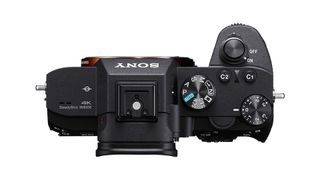
There’s not much else to criticize in terms of handling. A movie button sits just to the right of the viewfinder, which gives a quicker switch to video recording than the main mode dial. The 0.78x electronic viewfinder is more than adequate, although there’s an occasional lag when starting up the camera.
When you use the LCD, fine-tuning the focus is easily done via a light touch gesture on the screen. However, one annoyance for composition is that while the screen tilts, it’s not fully articulating, which makes it a bit awkward to reach interesting angles or shoot low to the ground in portrait orientation. By default, the screen can also be a bit dim, but if you set the Sunny Weather mode, it becomes much more usable in bright daylight.
In inclement weather, the Sony A7 III holds up surprisingly well. Its magnesium alloy outer shell is designed to withstand the elements, and during a particularly harsh landscape shoot in Scotland, we felt confident to keep going despite exposing the camera to strong rainfall and winds.
Sony A7 III review: Functionality
- 4K video recording
- 4D Focus for wider frame coverage
- AF/AE capabilities

The Sony A7 III has been designed to serve all genres and subjects, and it suits this function well in terms of both its design and image output. Landscape photographers will make up a large proportion of users, and while the RAW files show great dynamic range for high-contrast scenes, the 24MP sensor might not be enough for those who want to make very big prints. In the field, we found that operating the camera can be difficult while wearing gloves, and to our disappointment discovered that there isn’t an intervalometer built-in. You’ll need to download the PlayMemories apps for this function.
Kit lens: Sony FE 28-70mm f3.5-5.6 OSS
Best wide lens: Sony FE 12-24mm f4 G
Best zoom lens: Sony 24-105mm F4 FE G OSS
Spare battery type: NP-FZ100
Memory card: SanDisk Extreme PRO 128GB SDXC
For portrait shooters, the A7 III’s Eye autofocus is impeccable, and the camera locks on accurately even at wider apertures with a prime portrait lens. If anything, when we took headshots with the Sigma 85mm F1.4 DG HSM Art lens, the results were so sharp they were almost unflattering.
Although the A7 III probably isn’t the top choice for wildlife and sports shooters, the incredible autofocus coverage (93% of the frame), effective subject tracking and 10fps burst shooting mode through the viewfinder is enough to satisfy fans of action.

On some cameras of this price, video recording capabilities are very much second fiddle to the stills specs. Not so on the Sony A7 III, which offers 4K video footage at 24 frames per second (the Sony A7 III could only record Full HD) plus tools to aid exposure and focus. The video features nicely are rounded off with headphone and microphone jacks, giving options to create pro video straight from the camera.
In 4K/24p mode, the Sony A7 III actually captures 6K footage using every pixel on the sensor and then condenses it by approx. 2.4 times for a 4K movie. What this means is you get incredibly detailed footage, which you could zoom into or take decent screenshots from. When recording at 30fps there is a 1.2x crop from full-frame, but the quality is still impressive and more than usable for most enthusiast outputs.

While not a particularly sexy selling point, the A7 III’s battery life is also brilliant. It has 2.2 times the capacity of the A7 II’s, and this amounts to up to around 600 shots when using the electronic viewfinder – or in our experience, a full day of on-off travel photography.
Sony A7III review: Performance
- Good low-light results
- Effective eye autofocus
- Dependable battery life

On paper, the Sony A7 III offers much greater performance than it should for the price. Sony has borrowed some tech from the flagship A9 sports camera, providing the A7 III with 693 phase-detection AF points covering 93% of the image area – many more than competitors such as the Nikon Z6. But specs are one thing, and real-life results are another.
Fortunately, we found few issues with the A7 III tracking, except that it doesn’t always keep up with erratic subjects (it was fooled by a fast puppy). Elsewhere, for portraits relying on the Eye AF mode (which can be used in continuous or single-shot AF modes) and landscape shots requiring a more selective use of foreground interest, it delivers the goods.
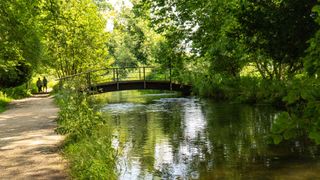
RAW Image quality from the 24MP sensor is generally excellent, with a few exceptions. Significant banding appears when you're shooting under artificial lighting such as fluorescents or LEDs, and subtle moiré patterns occur in scenes when the subject being photographed is wearing clothing with repetitive details.
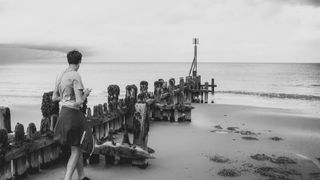
Although not marketed as Sony’s top-tier model for astrophotography, the A 7 III’s low-light performance is one of the best on the market right now. RAW files retain good detail and contrast up to ISO 12,800, although sharpness and texture start to disappear after 25,600. What is perhaps most impressive is the camera's high dynamic range, which allows you to recover amazing detail out from the shadows with no discoloration to the tones. In situations where you can’t lower the shutter speed and don’t want to boost the ISO, knowing that you can recover underexposed tones is a great solution.
Should you buy the Sony A7 III?
Sony’s A7 line of mirrorless cameras is perfect for the generalist photographer, and the A7 III is no different. Equally adept at stills and video, it will suit you if you’re someone who might go from photographing a family event one day, to shooting landscapes and travel for fun, with the odd bit of commercial work as a side hustle. Although the A7 III is no beginner camera, it’s generally easy to pick up and use, even if you’ve come from other brands previously.
If you want a camera that’s fairly compact, fairly affordable and very versatile, it’s the right choice to make. Plus, with the latest Sony A7 IV release, we wouldn’t be surprised to see the A7 III price drop soon, making it an even more sensibly priced option than it is currently.

If this product isn’t for you
If only the latest model will do, look to the Sony A7 IV. It supersedes the A7 III in every way – including price.
The Sony A7R IV is a better choice if you’re looking to make big prints from your files, as the 61-megapixel sensor offers much greater resolution.
If you're on the lookout for a mirrorless option by Nikon, you could try the Nikon Z6: easy to handle with a superb ISO range, it's a great camera for astrophotography.
The Fuji X-T4 is a great lightweight option both for landscape and astrophotography.
Join our Space Forums to keep talking space on the latest missions, night sky and more! And if you have a news tip, correction or comment, let us know at: community@space.com.
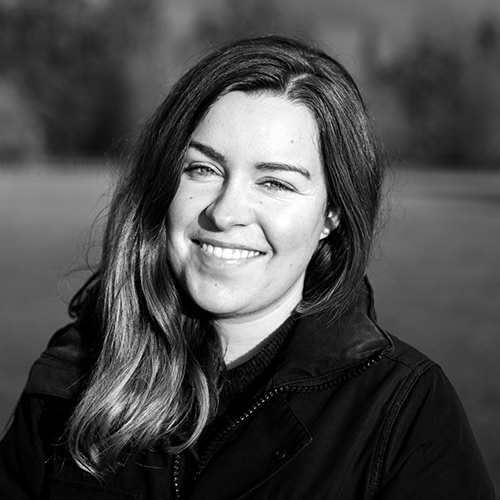
Lauren is a photographer, writer and editor based in the Cotswolds, UK. An experienced journalist who has been covering the industry for over ten years, she's equally adept at putting the latest camera through its paces or learning a creative shooting technique and then passing that knowledge on in an accessible way. Lauren holds a degree in Natural History Photography and has plenty of real-world experience in a variety of disciplines, from astrophotography to wildlife, weddings, and even commercial portraiture. Lauren is the Managing Editor of Digital Camera World, having previously served as Editor of the global publication Digital Photographer, a practical-focused magazine that inspires hobbyists and pros alike to take phenomenal shots and get more from their kit.
